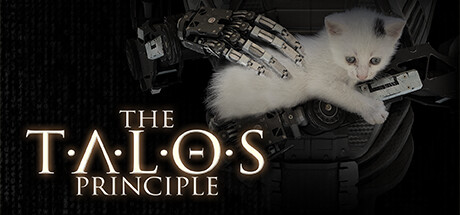Part 4: Core Gameplay Elements
Core Gameplay Elements – Introduction
In video game design, core gameplay elements refer to the fundamental mechanics that define how players interact with the game world.
They are the building blocks of the experience, shaping what players actually do during gameplay.
Without strong core elements, even the most beautiful graphics or compelling story may fail to keep players engaged.
Core gameplay elements are designed to align with the genre, narrative, and target audience of a game.
For example, a horror game may emphasize resource management and tension, while an action game may focus on fast reflexes and combat.
These elements are what make the gameplay loop satisfying, rewarding, and worth repeating.
Understanding and balancing these elements is essential for game developers.
They determine not only the difficulty curve and pacing but also how memorable the player’s journey will be.
In this section, we will explore some of the most common core gameplay elements and analyze how they shape player experiences across different genres.
Exploration
The exploration element is centered around discovering new environments, secrets, and stories within the game world.
It encourages players to move beyond the main objectives and immerse themselves in the setting, uncovering hidden details that enrich the overall experience.
Exploration often rewards curiosity, whether through collectibles, lore, or simply breathtaking scenery.
One of the strengths of exploration is how it deepens immersion.
By giving players freedom to wander, games feel more alive and expansive.
Exploration also creates pacing variety, balancing moments of intense action with quiet discovery.
It can turn a game world into a character of its own, full of personality and surprises.
Exploration is used across many genres, from open-world adventures to indie puzzle games.
Some notable examples include:
- Subnautica – Underwater survival where exploration is key to survival and discovery.
- Outer Wilds – A space exploration game built around curiosity and uncovering mysteries.
- The Legend of Zelda: Tears of the Kingdom – A vast open-world full of secrets, shrines, and hidden treasures.
Combat
The combat element defines how players engage in battles against enemies, whether through melee, ranged weapons, or special abilities.
Combat systems can vary from fast-paced action to slow, tactical encounters, but in all cases, they test the player’s reflexes, strategy, and mastery of the mechanics.
Strong combat design is often a cornerstone of action, RPG, and shooter games.
A well-designed combat system balances challenge and reward.
Players should feel that every fight matters, whether they are taking down small enemies or epic bosses.
Variety is key: different weapons, abilities, or enemy types ensure that combat stays fresh and engaging throughout the game.
Combat also shapes the emotional tone of a game.
Frenetic combat can generate excitement and adrenaline, while slower, deliberate battles can build tension and strategy.
Some notable examples include:
- Devil May Cry 5 – Fast-paced, combo-heavy melee combat.
- Sekiro: Shadows Die Twice – Precision swordplay requiring perfect timing and reflexes.
- Halo Infinite – A sci-fi shooter with dynamic gunplay and large-scale encounters.
Puzzle-Solving
The puzzle-solving element challenges players to think critically, recognize patterns, and use logic to progress.
Puzzles can range from simple environmental interactions to complex multi-step challenges that require experimentation and creativity.
They add variety to gameplay, slowing down the pace and giving players a chance to engage their minds rather than just their reflexes.
One of the key strengths of puzzle-solving is how it enhances immersion through interaction with the environment.
Well-integrated puzzles make players feel like active participants in the game world, using observation and problem-solving to unlock secrets or advance the story.
Poorly designed puzzles, however, can frustrate players if they feel too disconnected from the overall gameplay.
Puzzle mechanics appear across many genres, from adventure games to action titles, often blending seamlessly with exploration and storytelling.
Some notable examples include:
- The Talos Principle – A philosophical puzzle game with intricate environmental challenges.
- Portal 2 – A first-person puzzle game built around creative use of portals and physics.
- Little Nightmares III – A dark puzzle-platformer where solving environmental challenges drives progression.
Progression & Rewards
The progression and rewards element gives players a sense of growth and accomplishment as they advance through the game.
Progression can take many forms, such as leveling up characters, unlocking new abilities, or gaining access to new areas.
Rewards, whether big or small, provide motivation for players to continue investing time and effort into the experience.
A strong progression system balances challenge and satisfaction.
If rewards are too easy to obtain, they lose their value; if they are too difficult, players may feel discouraged.
The best systems gradually introduce new goals, offering both short-term incentives (like loot) and long-term achievements (like completing story arcs).
Progression also helps establish the rhythm of a game, creating a loop that keeps players engaged.
Some notable examples include:
- Diablo IV – Loot-driven progression with endless character builds and gear upgrades.
- Hades 2 – A roguelike progression system where each run unlocks permanent upgrades and narrative rewards.
- Assassin’s Creed Odyssey – An RPG progression system with leveling, gear customization, and story advancement.
Storytelling Integration
The storytelling integration element focuses on how narrative is woven directly into gameplay rather than existing only in cutscenes.
When done effectively, players feel like they are not just watching a story unfold but actively participating in it.
This creates a stronger emotional connection and makes the experience more immersive.
Integrating storytelling into gameplay can happen through dialogue choices, environmental storytelling, or character actions.
For example, exploring a ruined house may reveal fragments of a family’s story without a single line of text.
This approach allows players to piece together narratives at their own pace, creating a deeper sense of discovery.
Story-driven gameplay can elevate even simple mechanics by giving them meaning and emotional weight.
Some notable examples include:
- The Last of Us Part II – Seamless integration of narrative and gameplay, blending survival mechanics with emotional storytelling.
- What Remains of Edith Finch – A walking simulator where gameplay shifts to match each character’s unique story.
- Hellblade: Senua’s Sacrifice – Storytelling tied to the protagonist’s mental state, blending gameplay and narrative design.
End of Part-04 (Core Gameplay Elements)
Author: Pouria Mojdeh
Sources:
Book: The Gamer’s Brain
Book: Encyclopedia of Video Games: The Culture, Technology, and Art of Gaming [3 volumes]
Book: The Ultimate Guide to Video Game Design: Fundamentals
Website: Steam
Website: Nintendo
Website: Blizzard
Use of this material without proper attribution is not permitted.
















